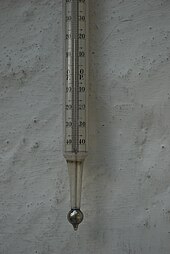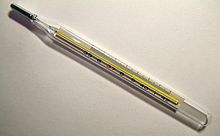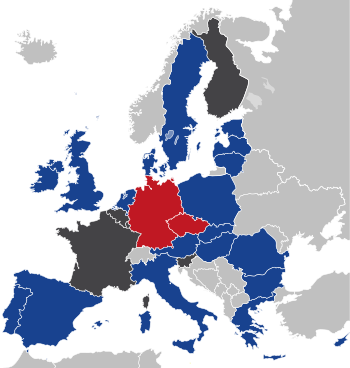I just had a horrible nightmare!!
The detectives in the department should immediately look into the possibility as Alzheimer's disease is the sixth leading cause of death in the United States and the fifth leading cause of death among those aged 65 and older what if it is mercury poisoning as that causes cognitive decline.
Fact: It has been known in our history of the United States that parents have problems and have caused their children to be horribly ill, and it is very difficult to prove yet occasionally you have been able to prove it by the work of investigations and determination, especially when the circumstances look strange, the parenting disorder is called Munchausen syndrome by proxy.
To be sure that there is not a disorder coming from the children, please investigate 'mercury poisoning' as that causes cognitive decline and is found in old style thermometers that the Old's would have had in their homes, see example below of Mercury-in-glass thermometer.
Alzheimer's disease is the sixth leading cause of death in the United States and the fifth leading cause among those aged 65 and older. ... The researchers believe Hispanic Americans will have the largest increase due to their expected population growth in the coming decades.Sep 20, 2018
Mercury-in-glass thermometer
Mercury-in-glass
thermometer for measurement of room temperature. Daniel Fahrenheit's
mercury-in-glass thermometer was far more reliable and accurate than any
that had existed before, and the mercury thermometers in use today are
made in the way Fahrenheit devised.
Danzig-born Daniel Gabriel Fahrenheit, a pioneer of exact thermometry (or precision thermometry. He invented the mercury thermometer (first practical, accurate thermometer) and Fahrenheit scale (first standardized temperature scale to be widely used).
In order to calibrate the thermometer, the bulb is made to reach thermal equilibrium with a temperature standard such as an ice/water mixture, and then with another standard such as water/vapour, and the tube is divided into regular intervals between the fixed points. In principle, thermometers made of different material (e.g., coloured alcohol thermometers) might be expected to give different intermediate readings due to different expansion properties; in practice the substances used are chosen to have reasonably linear expansion characteristics as a function of true thermodynamic temperature, and so give similar results.
The application of mercury (1714) and Fahrenheit scale (1724) for liquid-in-glass thermometers ushered in a new era of accuracy and precision in thermometry, and is still to this day regarded as one of the most accurate thermometers available.[1]
Contents
History
A large mercury in glass thermometer.
Anders Celsius, a Swedish scientist, devised the Celsius scale, which was described in his publication The origin of the Celsius temperature scale in 1742.
Celsius used two fixed points in his scale: the temperature of melting ice and the temperature of boiling water. This wasn't a new idea, since Isaac Newton was already working on something similar. The distinction of Celsius was to use the condition of melting and not that of freezing. The experiments for reaching a good calibration of his thermometer lasted for 2 winters. By performing the same experiment over and over again, he discovered that ice always melted at the same calibration mark on the thermometer. He found a similar fixed point in the calibration of boiling water to water vapour (when this is done to high precision, a variation will be seen with atmospheric pressure; Celsius noted this). At the moment that he removed the thermometer from the vapour, the mercury level climbed slightly. This was related to the rapid cooling (and contraction) of the glass.
When Celsius decided to use his own temperature scale, he originally defined his scale "upside-down", i.e. he chose to set the boiling point of pure water at 0 °C (212 °F) and the freezing point at -100 °C (-32 °F).[2] One year later, Frenchman Jean-Pierre Christin proposed to invert the scale with the freezing point at 0 °C (32 °F) and the boiling point at 100 °C (212 °F).[3] He named it Centigrade (100 grades).
Finally, Celsius proposed a method of calibrating a thermometer:
- Place the cylinder of the thermometer in melting ice made of pure water and mark the point where the fluid in the thermometer stabilises. This point is the freeze/thaw point of water.
- In the same manner mark the point where the fluid stabilises when the thermometer is placed in boiling water vapour.
- Divide the length between the two marks into 100 equal parts.
Before the discovery of the true thermodynamic temperature, the thermometer defined the temperature; thermometers made with different materials would define different temperature scales (a coloured alcohol thermometer would give a slightly different reading than a mercury thermometer at, say half-scale). In practice, several materials gave very similar temperatures to each other and, when discovered, to the thermodynamic temperature.
Maximum thermometer
Closeup of a maximum thermometer. The break in the column of mercury is visible.
A medical mercury-in-glass maximum thermometer showing the temperature of 38.7 °C.
Maximum minimum thermometer
A maximum minimum thermometer, also known as Six's thermometer, is a thermometer which registers the maximum and minimum temperatures reached over a period of time, typically 24 hours. The original design contains mercury, but solely as a way to indicate the position of a column of alcohol whose expansion indicates the temperature; it is not a thermometer operated by the expansion of mercury; mercury-free versions are available.Physical properties
Mercury thermometers cover a wide temperature range from −37 to 356 °C (−35 to 673 °F); the instrument's upper temperature range may be extended though the introduction of an inert gas such as nitrogen. This introduction of an inert gas increases the pressure on the liquid mercury and therefore its boiling point is increased, this in combination with replacing the Pyrex glass with fused quartz allows the upper temperature range to be extended to 800 °C (1,470 °F).Mercury cannot be used below the temperature at which it becomes solid, −38.83 °C (−37.89 °F). If the thermometer contains nitrogen, the gas may flow down into the column when the mercury solidifies and be trapped there when the temperature rises, making the thermometer unusable until returned to the factory for reconditioning. To avoid this, some weather services require that all mercury-in-glass thermometers be brought indoors when the temperature falls to −37 °C (−35 °F).
To measure lower meteorological temperatures, a thermometer containing a mercury-thallium alloy which does not solidify until the temperature drops to −61.1 °C (−78.0 °F) may be used.
Phase-out
As of 2012, many mercury-in-glass thermometers are used in meteorology; however, they are becoming increasingly rare for other uses, as many countries banned them for medical use due to the toxicity of mercury. Some manufacturers use galinstan, a liquid alloy of gallium, indium, and tin, as a replacement for mercury.The typical "fever thermometer" contains between 0.5 and 0.3 g (0.28 and 0.17 drachms) of elemental mercury.[4][5] Swallowing this amount of mercury would, it is said, pose little danger but the inhaling of the vapour could lead to health problems.[6]
List of countries with regulations or recommendations on mercury thermometers
Map of the countries of the European Union
that banned mercury-in-glass thermometers according to Directive
2007/51/EC as of 22 January 2013. Countries in blue have made legal bans
on the issue, countries in gray are of unknown status at the present,
and countries in red are those whose "Member State does not consider
national execution measures necessary."[7]
- Argentina
- Austria
- Philippines
- United Kingdom
- United States of America


















No comments:
Post a Comment